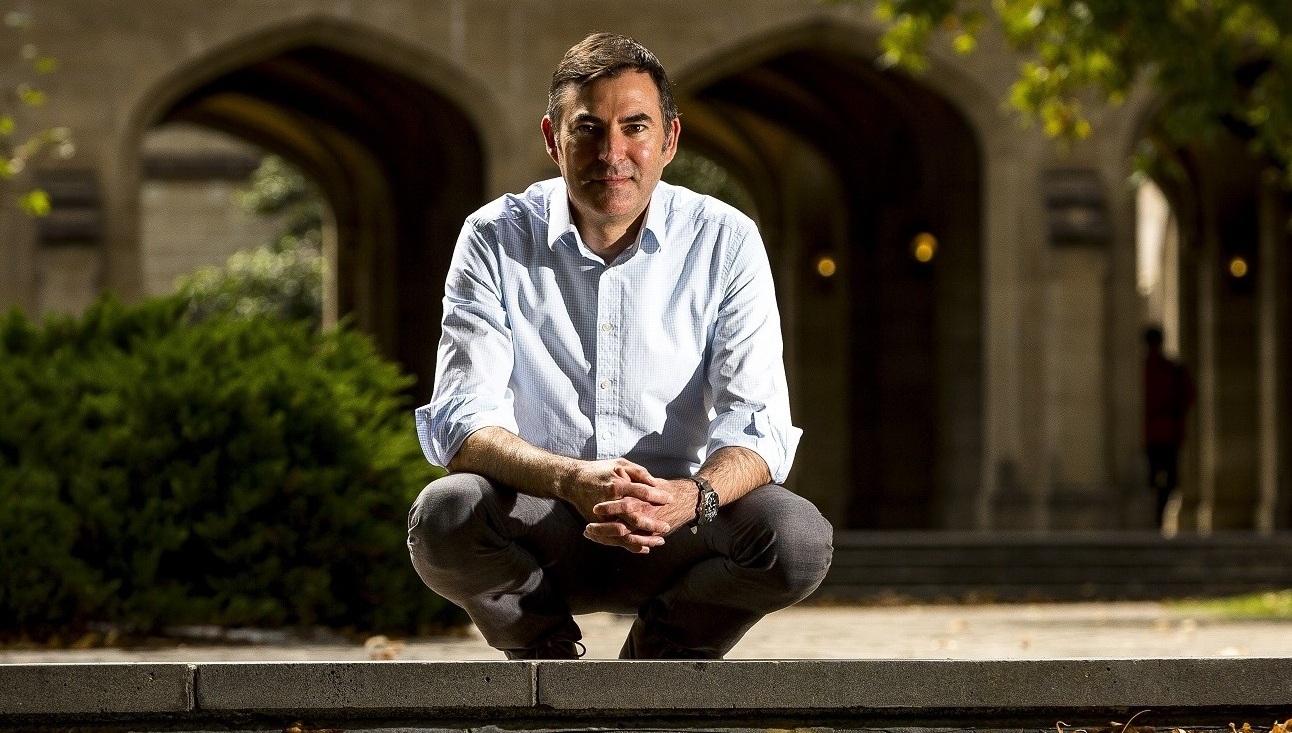Studying the classic C. elegans model of ageing, the investigators demonstrated that lowering iron levels improved the health of the animals in advanced age and doubled their life span. The findings open new research prospects for healthy ageing and support novel treatment approaches for neurodegenerative diseases.
Iron plays a crucial role in cell self-defence. When cells become infected or cancerous, they can metabolise iron stores and ‘self-destruct’ through a process known as ferroptosis. As cells age, ferroptosis can be triggered unnecessarily and is believed to contribute to age-related diseases such as Alzheimer’s disease and stroke.
Dr Gawain McColl, Dr Nicole Jenkins and Professor Ashley Bush, have uncovered new therapeutic mechanisms to limit ferroptosis and by doing so, promote healthy brain aging. The researchers are based at The Florey and Melbourne Dementia Research Centre.
The team’s latest study published in eLife journal demonstrates two approaches to block ferroptosis in C. elegans animal models. In one line of investigation they successfully inhibited iron-induced lipid damage using the antioxidant liproxstatin, and in the other, limited iron accumulation using an iron removal compound called SIH. Both approaches dramatically increased lifespan for the animals.
“We found that by blocking ferroptosis the animals not only lived longer, they were also fitter for longer. We saw evidence of reduced frailty in the animals and most impressively, we were able to double the length of their typical lifespan,” explained Senior Author Dr Gawain McColl, Head of The Florey’s Molecular Gerontology Laboratory.
“Our profound understanding of what happens to cells during biological ageing means that we are now able to explore ways to limit cellular damage and decrease the risk of age-related disease. This is an exciting time in medical research,” Dr McColl added.
 Dr Gawain McColl, Head of The Florey’s Molecular Gerontology Laboratory
Dr Gawain McColl, Head of The Florey’s Molecular Gerontology Laboratory
Caenorhabditis elegans (C. elegans) roundworms are an ideal, classic research model for studying aging as their entire genome is known and easily studied by scientists. These animals grow from a single cell into an adult worm in just three days and die of old age in two weeks.
The research was made possible through international collaboration between the Melbourne Dementia Research Centre, The Florey, ANSTO Synchrotron and the Institute of Metabolism and Cell Death, Neuherberg, Germany.
Dr Marcus Conrad, Director of the Institute of Metabolism and Cell Death in Germany, commented on the findings.
“This research impressively extends our current understanding of the role of ferroptosis in degenerative diseases and restraining life span, and is a promising exploration of the causation of premature ageing,” said Dr Conrad.
The researchers now plan to further investigate ferroptosis-blocking compounds targeting iron storage in neurodegenerative diseases in the hope that early therapeutic intervention may hold benefits in healthy aging and reducing the prevalence of neurodegenerative diseases.
Professor Ashley Bush is currently investigating the benefits of deferiprone in treating iron overload in a clinical Alzheimer’s disease trial, which works in a similar way to the iron-limiting SIH compound in the C. elegans model.
The research was funded by the Australian Research Council, the University of Melbourne and The Miller Foundation. It has been published in eLife: DOI 10.7554/eLife.56580
